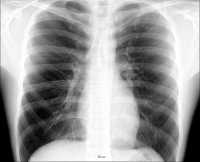Abuse and Neglect, Alzheimer's - Dementia, Autism, Medical Imaging, Mental Health Research, MRI, Multiple Sclerosis, Neurology, Technology / 23.12.2019
AI-Support Using Volumetric Biomarkers and Clinical Data Improves Diagnosis in MS, Autism and Alzheimer’s
MedicalResearch.com Interview with:
Sebastian Magda, Ph.D
Director of Science & Engineering
CorTechs Labs, Inc
MedicalResearch.com: What is the background for this study?
Response: Previous studies have shown that the changes of brain structure volume and/or metabolic activity are associated with various neurological diseases.
We have created an artificial intelligence clinical decision support tool based on brain volumetric and PET metabolic activity measurements as well as other clinical measurements. (more…)



